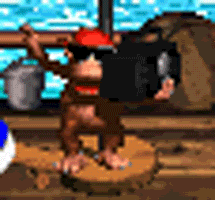Post by Hey Suburbia! on Oct 6, 2004 10:33:23 GMT -5
Kurt Wilson CGC1D
Mr. Tarantini
Glaciation
A Glacier is basically a huge block of ice. It moves slowly across land like a dense liquid and changes major land features wherever it goes.
Glaciers can come in two types. The first is an Alpine glacier; these are found atop mountains and thanks to the cooler atmosphere, can take a long time to melt.
As they melt they can erode the very mountains they sit on. This sediment from the mountains can cause major land form changes, such as the formation of smaller mountains near the site of the original.
The second type of Glacier is a Continental Glacier. These can be incredibly large in size (covering the size of continents) and cause land form changes much greater than the alpine Glaciers could. Continental Glaciers are most commonly found during ice ages, and they can take thousands of years in their journey.
Glaciation mostly occurred during the ice age, and the most recent one was over 6000 years ago. This may seem like a long time ago, but it is very recent in geologic terms. The effects of this can still be seen in Canada today.
Many landforms are created during glaciation. Such as drumlins, these are little egg shaped hills that happen to be very good for farming. They are usually found in clusters or “fields”, and the path of which they face marks which way the glacier that formed them was moving. A fun little fact.
Other landforms that are formed during glaciation include; moraines, which are mounds of till that could either mark the beginning or end of a glacial cycle. U-shaped valleys, which marked when two glaciers converged on a spot. Striations, which are marks or indents on bedrock formed when “conveyer-belting” till scratched at it from a glacier. Fjords, which are long narrow inlets of the sea located between high cliffs. Cirque, which is a steep sided hollow located at the heads of valleys or mountain sides. Eskers, which are long, narrow ridges of coarse gravel deposited by flowing streams under glacial ice. And Lake Plains, which are giant plains that were formerly lakes created by melting ice water.
One of the forces caused by melting ice water is erosion, which is a process of water slowly breaking away chunks of rock and smoothing them down. This force can take several hundred meters off the top of mountains .
Deposition is what a glacier does to till deposits floating around inside glaciers. Till is “conveyer-belted” around inside glaciers for a while and then is deposited onto soil when it finally gets out.
© Dylan
CopyWrights Dylan
The copyrights have been bought by dylan13, via runescape. The rights of this report are now legally shared between Kurt Wilson and Dylan.
Mr. Tarantini
Glaciation
A Glacier is basically a huge block of ice. It moves slowly across land like a dense liquid and changes major land features wherever it goes.
Glaciers can come in two types. The first is an Alpine glacier; these are found atop mountains and thanks to the cooler atmosphere, can take a long time to melt.
As they melt they can erode the very mountains they sit on. This sediment from the mountains can cause major land form changes, such as the formation of smaller mountains near the site of the original.
The second type of Glacier is a Continental Glacier. These can be incredibly large in size (covering the size of continents) and cause land form changes much greater than the alpine Glaciers could. Continental Glaciers are most commonly found during ice ages, and they can take thousands of years in their journey.
Glaciation mostly occurred during the ice age, and the most recent one was over 6000 years ago. This may seem like a long time ago, but it is very recent in geologic terms. The effects of this can still be seen in Canada today.
Many landforms are created during glaciation. Such as drumlins, these are little egg shaped hills that happen to be very good for farming. They are usually found in clusters or “fields”, and the path of which they face marks which way the glacier that formed them was moving. A fun little fact.
Other landforms that are formed during glaciation include; moraines, which are mounds of till that could either mark the beginning or end of a glacial cycle. U-shaped valleys, which marked when two glaciers converged on a spot. Striations, which are marks or indents on bedrock formed when “conveyer-belting” till scratched at it from a glacier. Fjords, which are long narrow inlets of the sea located between high cliffs. Cirque, which is a steep sided hollow located at the heads of valleys or mountain sides. Eskers, which are long, narrow ridges of coarse gravel deposited by flowing streams under glacial ice. And Lake Plains, which are giant plains that were formerly lakes created by melting ice water.
One of the forces caused by melting ice water is erosion, which is a process of water slowly breaking away chunks of rock and smoothing them down. This force can take several hundred meters off the top of mountains .
Deposition is what a glacier does to till deposits floating around inside glaciers. Till is “conveyer-belted” around inside glaciers for a while and then is deposited onto soil when it finally gets out.
© Dylan
CopyWrights Dylan
The copyrights have been bought by dylan13, via runescape. The rights of this report are now legally shared between Kurt Wilson and Dylan.










